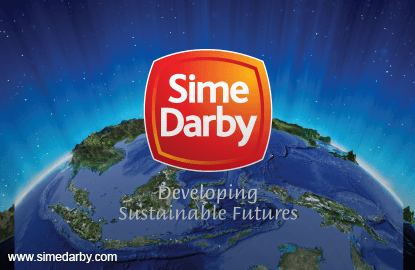
This article first appeared in The Edge Financial Daily, on 30 November, 2015.
Sime Darby Bhd
(Nov 27, RM8.05)
Upgraded to hold call with a higher target price (TP) of RM7.60: Despite the inclusion of New Britain Palm Oil Ltd (NBPOL), Sime Darby Bhd turned in a weak first quarter ended Sept 30, 2015 (1QFY16) with a headline net profit of RM328.4 million (fell 34.4% year-on-year [y-o-y]).
Significantly lower profits were recorded by industrial (all regions, especially Australia, recorded poorer performance), motors (lower contributions from Malaysia and New Zealand, coupled with start-up losses in Taiwan), property (gain of RM55.5 million on the disposal of Eastern & Oriental Bhd [E&O] shares in 1QFY15) and energy and utilities (E&U) (unrealised exchange loss of RM32.3 million on provision for Oil and Natural Gas Corp Ltd project plus lower profit from Chinese port operations).
These declines were partly offset by higher contribution from plantation (inclusion of NBPOL and an exchange gain of RM45.4 million, but offset to an extent by lower crude palm oil [CPO] average selling price [ASP] and Indonesian production) and gain on swap contract.
Excluding the E&O share disposal gain, profit from property increased due to higher contributions from the Pagoh Education Hub, Nilai Impian and Kuala Lumpur East Melawati projects. Interest expenses increased 54.4% year-on-year.
Sequentially, 1QFY16 headline net profit declined 66.8% as all divisions recorded lower profits — plantation (lower CPO ASP and lower sales volume, with the latter resulting in higher inventory), industrial (lower profit from all regions), motors (dividend income of RM53.4 million in 4QFY15 and lower profit from all regions except China, Singapore and Vietnam), property (lower even after excluding disposal gain of RM157.2 million in 4QFY15) and E&U (unrealised exchange loss and lower port profit).
Excluding one-off gains and losses, 1QFY16 core net profit amounted to RM211.2 million, which is below our previous FY16 earnings forecast of RM2.57 billion and consensus average of RM2.26 billion.
The plantation sector is poised to do better in the coming quarters, as CPO ASP is likely to be firmer.
But the 1QFY16 performance, especially by the industrial (management expects a better second half in FY16 ending June 30, 2016 [2HFY16]), motors and E&U divisions, was unexpectedly poor.
We cut our FY16 to FY18 core net profit forecasts by 4% to 24%. Sime Darby has also announced its FY16 key performance indicator (KPI) targets of a net profit of RM2 billion and a return on average shareholders’ equity of 6.3%.
The lower KPI targets are based on an average CPO ASP of RM2,250 per tonne, continued contraction of the mining industry in Australia, economic slowdown in China, a weaker ringgit, and strict lending policies and cautious sentiment.
Despite the earnings per share (EPS) cuts, we are raising our TP for Sime Darby slightly to RM7.60 after rolling forward an unchanged price-earnings ratio of 16 times to estimated FY17 (FY17E) EPS.
We believe FY17E EPS will better capture the expected improvement in business outlook, including a maiden contribution from the Battersea project, after what is looking like a challenging FY16.
Sime Darby’s share price has eased from a recent high of RM8.80. We upgrade our rating on Sime Darby from “sell” to “hold”.
Potential share price drivers include an accelerated launch of the Malaysia Vision Valley project, which encompasses around 130,000 acres (52,609ha) for development and 55,000 acres of Sime Darby’s massive land bank; lumpy contributions from the Battersea project from 2HFY16, which could be enhanced if the pound sterling remains strong against the ringgit; and a significant improvement in the CPO price outlook.
Degearing options, including asset monetisation and equity issues, are still being considered.
As at end-September 2015, the group had bank balances, deposit and cash of RM3.65 billion, while group borrowings increased by RM1.6 billion to RM18.1 billion, and debt-to-equity ratio increased slightly from 58% at end-June 2015 to 60%. — AffinHwang Capital, Nov 27
